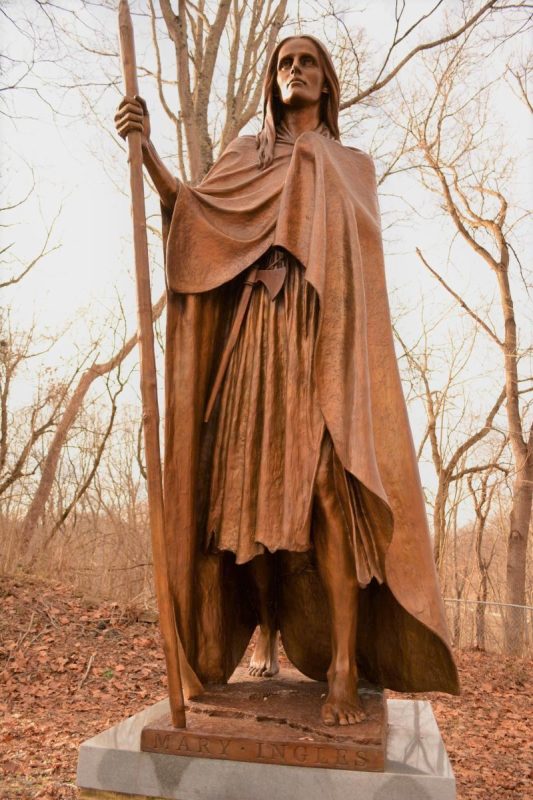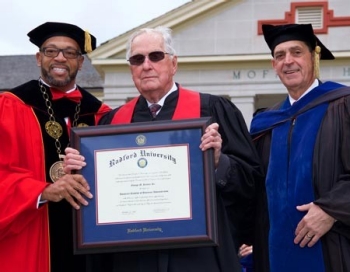
Mary Draper Ingles Statue in Radford
March is Women’s History Month, and Mayor David Horton is continuing the tradition he began for Black History Month in Radford.
Each Wednesday in March, Horton will post on his personal Facebook page an aspect of Radford-oriented women’s history. He began his posts with pioneer Mary Draper Ingles.
He wrote:
“March is #WomensHistoryMonth, and each Wednesday I would like to feature #radfordwomenshistory.
“Today, March 3, 2021, we feature Mary Draper Ingles who was one of the most famous women of her time as she was taken from her family, was forced to travel to near the area now known as Cincinnati, escaped captivity, and traveled back on foot to Southwest Virginia by following the river, finally settling with her family in what is today part of Radford.
“This is just a very brief synopsis of her incredible story, and her life is worthy of greater exploration available at https://www.marydraperinglestrail.com/about-mary.
“Her descendants still proudly share her story here in Radford, and her legacy has inspired generations.”
“According to www.marydraperinglestrail.com:
“Mary Draper Ingles was ‘born in Philadelphia in 1732 to Irish immigrants. She, along with her family, became part of the western migration as settlers moved down The Great Wagon Road into Virginia. Eventually she married William Ingles and settled in Drapers Meadows in what is present-day Blacksburg.
“While many parts of the frontier were in the grips of the French and Indian War, the New River Valley residents didn’t have reason to fear the parties of American Native Indians, who passed by periodically from the Ohio Valley on their way to fight the Catawbas farther south. At least, not until a day in July 1755 when members of the settlement were killed, and Mary and other family members were captured by the Shawnees and taken hundreds of miles into the frontier wilderness.
“However, this remarkable woman summoned tremendous physical and mental strength as she escaped from her captors and walked through Kentucky, West Virginia, and Virginia, navigating only through memory and by following significant waterways (the Ohio, Kanawha, and New Rivers), back to her home valley. Later she and her husband moved to the Radford area where they established a homestead and ferry operation. Mary lived here until her death in 1815.
“What transpired between these life episodes is a story that has been told and retold through books and articles, an outdoor drama, and at festivals and living history reenactments throughout a four-state region. Her story will inspire you.”

